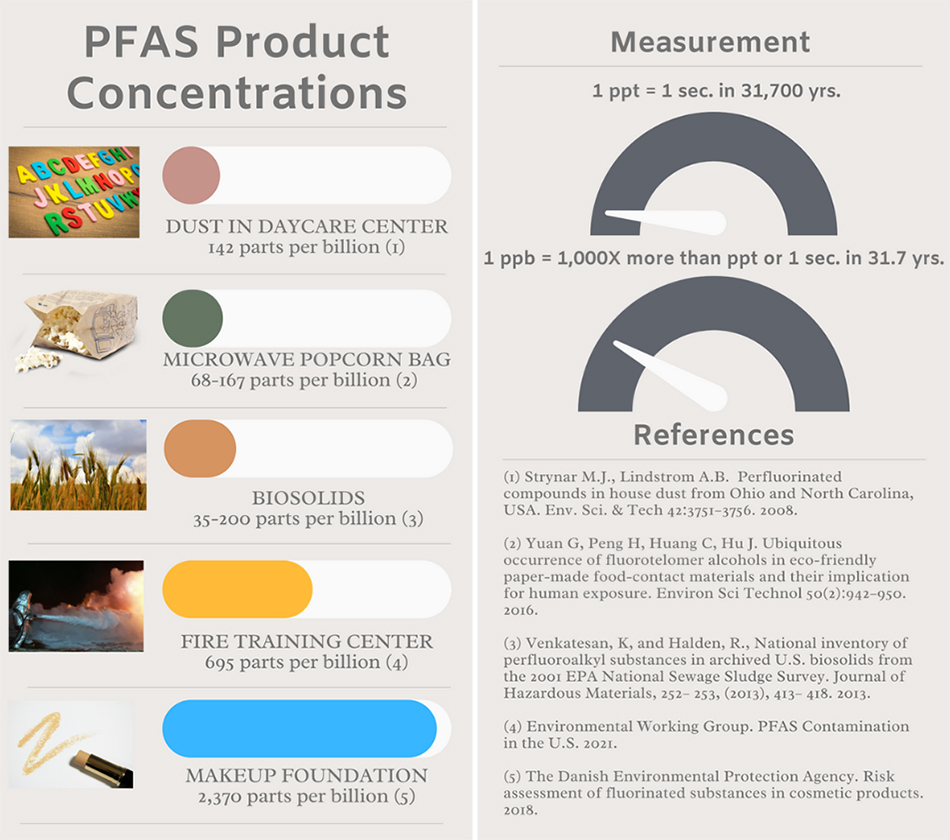 Per- and polyfluoroalkyl substances (PFAS) are chemicals used in non-stick coatings, food wrappers, fabric treatments, other household products, firefighting foams, and industrial processes. “PFAS have been in use more than 50 years and are persistent,” noted Ned Beecher, Special Projects Manager at the North East Biosolids & Residuals Association in an Op-Ed in Bloomberg Environment in November 2019. “They are in our trash, in our septic systems, and at our local wastewater and waste management facilities in trace amounts. Modern analytical chemistry has made it possible to measure parts per trillion (ppt). A ppt is equivalent to one second in 31,700 years.
Per- and polyfluoroalkyl substances (PFAS) are chemicals used in non-stick coatings, food wrappers, fabric treatments, other household products, firefighting foams, and industrial processes. “PFAS have been in use more than 50 years and are persistent,” noted Ned Beecher, Special Projects Manager at the North East Biosolids & Residuals Association in an Op-Ed in Bloomberg Environment in November 2019. “They are in our trash, in our septic systems, and at our local wastewater and waste management facilities in trace amounts. Modern analytical chemistry has made it possible to measure parts per trillion (ppt). A ppt is equivalent to one second in 31,700 years.
“Unfortunately, PFAS are also in our blood in a few parts per billion. And some PFAS persist there. That’s what scares people. After the Flint water lead crisis, regulators feel pressure to be responsive. While Canada set drinking water limits of 200 and 600 ppt for the two most prominent PFAS — PFOA and PFOS — respectively, New Hampshire regulated them at 12 and 15 ppt. These diverging standards reflect differing levels of political pressure within the context of scientific uncertainty. Rushing to set low limits on background levels of PFAS has unintended consequences, disrupting important environmental programs.”
Recently, the Water Environment Federation created a graphic to illustrate the concentrations of PFAS in consumer and industrial products as well as in biosolids. The graphic puts into perspective human and environmental exposure to these “forever chemicals.”










